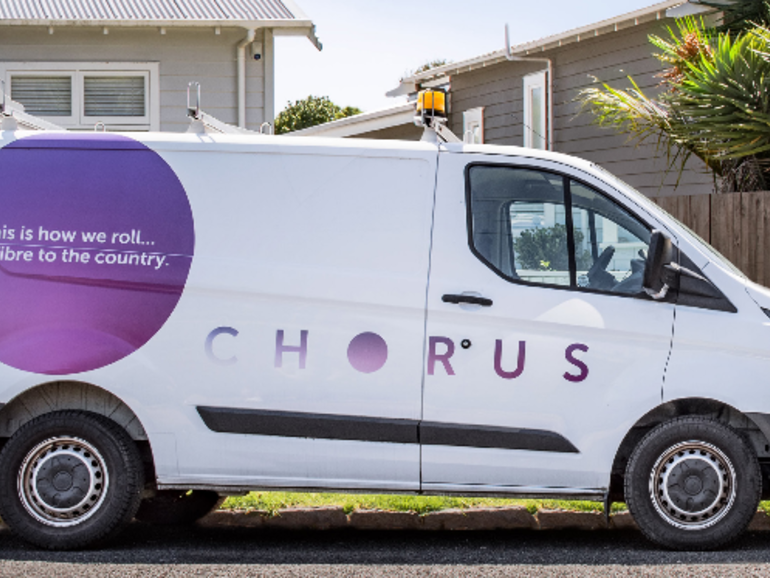COVID-19 headwinds and growing networking competition saw Chorus earn less in FY21 compared to the year prior, with the broadband wholesaler posting NZ$47 million in net profit after tax (NPAT). The NPAT figure is a NZ$5 million drop from FY20.
Operating revenue also saw a dip, going from NZ$959 million to NZ$954 million year-on-year. Chorus CEO JB Rousselot attributed the performance decline to softer market conditions, which arose from COVID-19 along with increased competition in the fibre and wireless networks space.
The dip was slightly offset by lower expenses however, with Chorus’s annual expenditure totalling NZ$298 million, which was NZ$13 million less when compared to FY20.
Earnings before interest, tax, depreciation, and amortisation (EBITDA) remained steady at NZ$649 million.
In response to the COVID-19 headwinds, Chorus also had a recruitment freeze for non-critical roles for much of FY21, which saw its total employee count reduce by 53 to 817.
“This reduction was driven by changes in our operating model as the fibre rollout winds down and we transition to a more operational and adaptive organisation,” Chorus said.
While Chorus acknowledged the dip, the company said it saw more customers shift onto fibre networks in New Zealand. Over the year, Chorus fibre uptake grew from 60% to 65%, with 120,000 new fibre connections from around 100 broadband retailers.
Chorus’ gigabit connections also saw growth, increasing by 3% to now comprise 19% of the broadband wholesaler’s total fibre connections.
The shift to fibre also saw Chorus’ amount of fixed line connections decrease by 75,000 year-on-year to 1.34 million connections.
The company added that its fibre network — the Ultra-Fast Broadband (UFB) network — was now 95% complete and the UFB2 rollout was ahead of schedule. By December 2022, Chorus will only need to pass 53,000 more premises for UFB to be complete, the company said.
During the financial year, fibre was added to Fox Glacier, National Park, and Mokau.
Looking at data usage of Chorus’ customers, the monthly average household data usage — over copper and fibre and including both downloads and uploads — grew from 350GB to 432GB across the year. Fibre customers, meanwhile, averaged 500GB in June, up from 436GB the year before.
Rousselot also touched on the New Zealand Commerce Commission’s draft decision regarding the valuation of Chrous’ fibre network when explaining the company’s financial results, saying that he was concerned with two aspects of the decision.
“Two aspects of the recent draft price-quality decision that Chorus is concerned about are proposed capital and operating expenditure cuts, and the obligation of an additional, complex approval process for offering retailer incentives to promote fibre,” Rousselot said.
“We wrote to the Commission to express our concern that this approach and their draft cuts to our expenditure proposals do not adequately reflect our market context.
“Taken together, with the low WACC settings and our proposed initial asset valuation of NZ$5.5 billion, there is a genuine risk that the new regulatory framework could discourage anything but essential investment for the next three years.”
Under the Telecommunications Act, ComCom is required to establish the value of Chorus’ fibre network, which includes the assets Chorus uses to provide fibre broadband services, as well as a financial loss asset to compensate Chorus for losses it incurred when rolling out the network ahead of demand.
The official valuation, which must be officially set by the start of 2022, determines the maximum revenue a regulated provider like Chorus can earn from its fibre network for the next three years. Due to this, the valuation of the network is a “key building block” for determining how much revenues Chorus will be able to earn until 2025, ComCom said as part of its draft decision.
Giving an outlook for FY22, Rousselot said the company’s guidance remained the same with a projected EBITDA in the NZ$640 million to NZ$660million range and projected expenditure range of NZ$550 to NZ$590 million.
He also noted FY22 would be a “crossroads years”, despite the guidance not changing, as the amount it will invest in network capacity will depend largely on ComCom’s valuation of Chorus’ fibre network.



